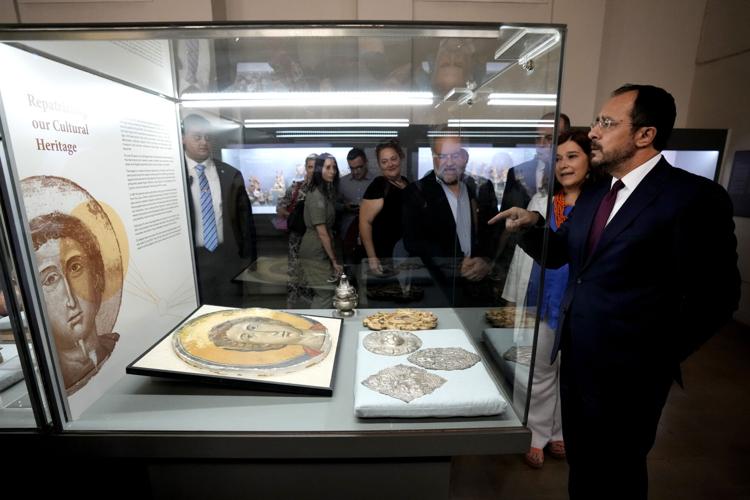The delivery of invaluable antiquities looted during the war that divided the island in 1974 is part of an ongoing initiative to trace and repatriate thousands of artifacts that have been trafficked globally.
Authorities report that following a Turkish invasion, which was instigated by a brief coup in Greece, thousands of antiquities were stolen and scattered around the world. The recovered items include church doors found in Japan, Bronze Age artifacts in Australia, and priceless examples of early Christian art in the United States— all taken from northern Cyprus, now recognized as a breakaway Turkish Cypriot state.
On Monday, officials formally welcomed the return of 60 artifacts, which encompass items from the Chalcolithic and Bronze Ages, as well as a wall painting from a church. Cypriot officials have stated that looting represents a systematic assault on the island's cultural heritage.
"Hundreds of churches and archaeological sites have been pillaged, resulting in thousands of relics being illegally exported from our occupied territory," Cypriot President Nikos Christodoulides remarked during an event at the Cyprus Museum, mere steps from the ceasefire line that divides Nicosia. The museum's entire collection, spanning from 9,000 BC, was transported to Athens for safekeeping during the tumultuous events of 1974.

The artifacts returned on Monday were recovered from Germany, where police discovered hundreds of items in 1997 at various addresses leased by a Turkish art dealer who passed away in 2020. Authorities maintain a specialized task force that diligently monitors the internet and auction sites daily to uncover suspicious activity.
"In most instances, the items for sale lack any records demonstrating their legal acquisition, indicating they were unlawfully exported from Cyprus," noted Eftychia Zachariou, Curator of Antiquities.
One particularly egregious case of looting involved the theft of a mosaic from the village of Lythrangomi in northern Cyprus in the late 1970s. This 6th-century mosaic, one of the few surviving pieces of religious art in the region prior to a temporary Byzantine edict against imagery and icons, was forcibly removed from its wall, shattered into various pieces, and sold. Some of these pieces have since been recovered and are currently on display in Cyprus's Byzantine Museum.

